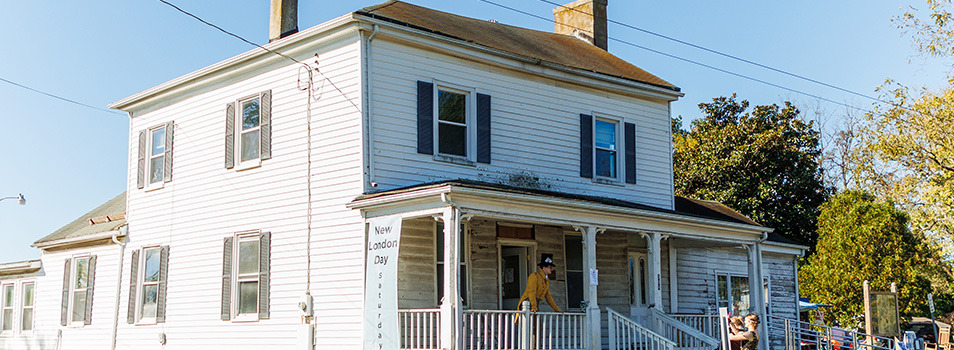Mead’s Tavern

A Landmark in American History
Mead’s Tavern, built in 1763, is the oldest standing structure in Central Virginia and the flagship site for historic preservation in the largely neglected community of New London. Designated as a Virginia Historic Landmark, Mead’s Tavern was listed on the National Register of Historic Places in 2021.
Friends of New London rescued the site from further deterioration in 2012 and sold it to Liberty University in 2015 for restoration and use as a laboratory for history students. Liberty has since supported the stabilization of the foundation, archaeological excavation, and extensive research of its construction and history.
Once described as “a magnificent house,” Mead’s tavern sat next to the Bedford County Courthouse and was a hub of activity in the 18th century. Patrons included westward settlers making a last stop before heading to the frontier, soldiers staffing the nearby arsenal, participants in court proceedings, and local community members.
How You Can Help
Support the preservation of the Liberty-owned New London Projects by donating today.
Changes Throughout Time
In 1781, Bedford County was divided to form Campbell County. The county seat was moved to Liberty, now Bedford, and New London began to decline. After decades as a tavern, in the early 1800s, Mead’s Tavern was transformed into a girls’ school run by Samuel T. Miller and his mother, Ann.
The building later served as a doctor’s office, insurance office, and private residence until Friends of New London acquired it for its historic significance.
Additional Mead’s Tavern Resources
- Student Research: Roland Academy at Mead’s Tavern
- Student Research: Mead’s Tavern and Historic Preservation
Liberty’s Architectural and Archaeological Exploration
Since Liberty University acquired Mead’s Tavern, the building has gained new life as a place of education, research, and discovery for our students. As the only surviving building from the colonial period in New London, the Mead’s Tavern property holds extensive archaeological material and unique 18th-century architectural features.
Archaeological study of the lot, basement, porch, and wing of the building uncovered thousands of artifacts, including a variety of ceramics and nails spanning the building’s history. Artifacts dating to the 18th century include pipe stems, game pieces, coins, cooking implements, and military buttons, along with 19th-century domestic items and sewing implements. Each of these contributes to a larger story about the daily lives of the people who inhabited this space.
The mortise and tenon construction, presence of hand-wrought nails, and distinctive hand-hewn beams testify to its early construction date when Virginia was still a colony. The basement is home to the oldest intact brick wall in Virginia west of Richmond. Further architectural investigation promises to reveal more about materials and methods of 18th-century construction.
Potential
A phased rehabilitation proposal for Mead’s Tavern includes restoration of the interior to reflect the rich and varied history of the building. Potential topics include a representation of the 18th-century tavern, telling the story of the 19th-century girls’ school, and highlighting the methods and materials of construction throughout the life of the building.
We are currently seeking funding for the first phase, which will create a fully finished museum space in the west wing of the building. Students will design and create exhibits to tell the story of New London’s evolution, and visitors will experience firsthand the process of restoring Mead’s Tavern.